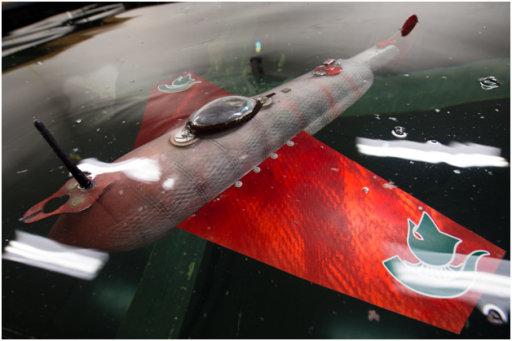A robotic fish that glides for long distances
January 18, 2013

Grace (Gliding Robot ACE), a robotic fish, can swim and glide long distances while gathering water data such as quality and temperature (credit: G.L. Kohuth/Michigan State University)
Michigan State University (MSU) scientists have redesigned a “robotic fish,” giving it the ability to glide long distances, using little to no energy, while measuring water temperature and quality and other data that can aid in testing and cleaning lakes and rivers.
According to research team leader Xiaobo Tan, MSU associate professor of electrical and computer engineering, while gliding uses less energy, it’s slower and less maneuverable, while swimming requires constant flapping of the tail and energy expenditure, which means the battery is constantly being discharged and typically wouldn’t last more than a few hours.
“This is why we integrated both locomotion modes — gliding and swimming — in our robot,” Tan said. “Such integration also allows the robot to adapt to different environments, from shallow streams to deep lakes, from calm ponds to rivers, with rapid currents.”
The ability of the robot, dubbed Grace (Gliding Robot ACE), to glide is achieved through a newly installed pump that pushes water in and out of the fish, to ascend or descend; a rail moves backward and forward, in sync with the pumping action, to allow the robot to glide (gracefully) through water on a desired path.
Grace is about 10 times smaller and lighter than commercial underwater gliders, and also has the advantage of swimming capability.
The research is supported by the National Science Foundation.
Hmmm, could we get Grace to monitor those whale killers mentioned in comments here? — Editor